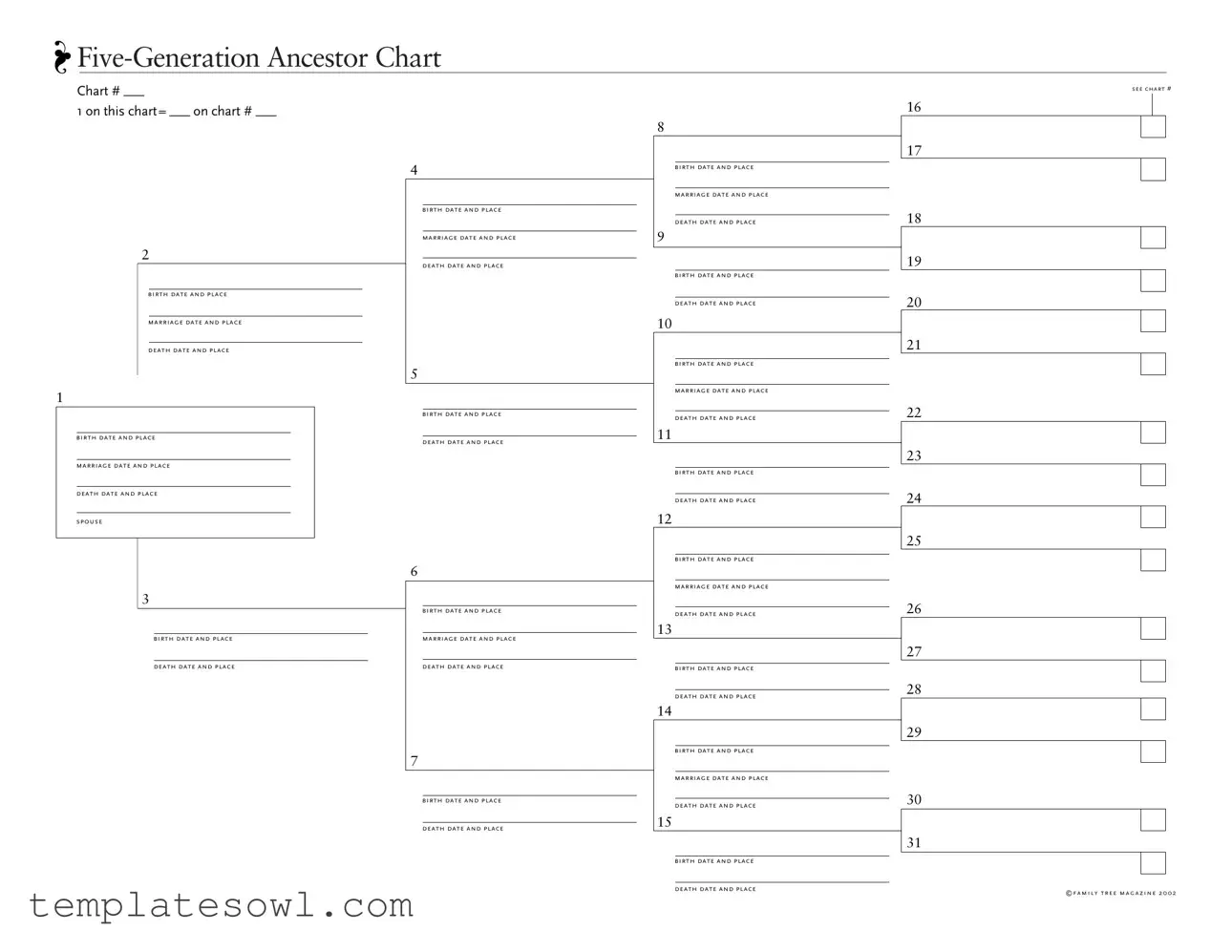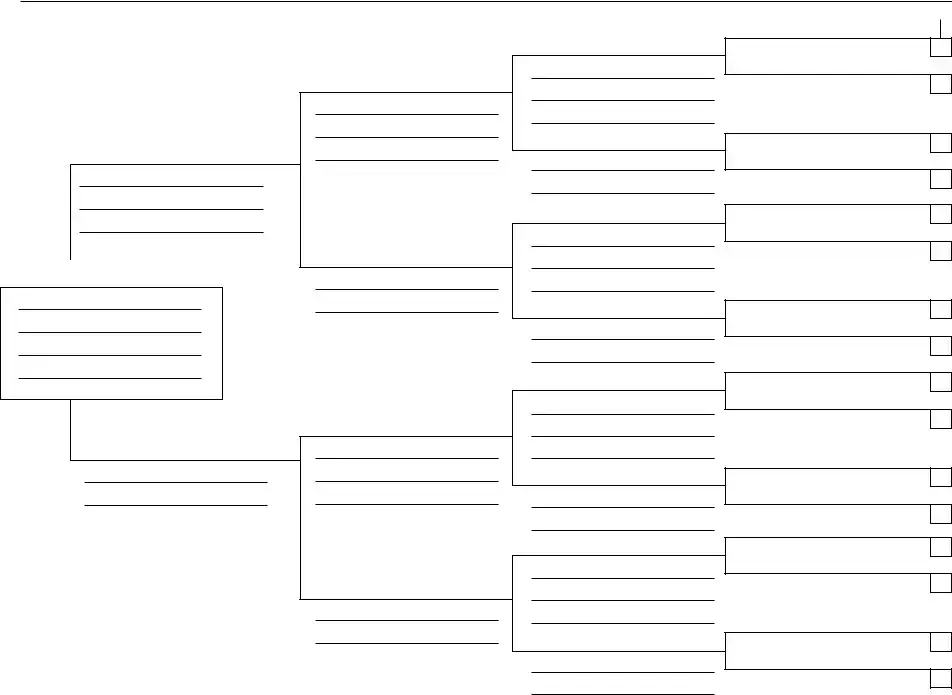What is the purpose of the Ancestor Chart form?
The Ancestor Chart form is designed to help individuals systematically document their family lineage. By outlining the names, birth dates, marriage details, and death dates of ancestors, this form creates a clear visual representation of family history. It's a valuable tool for genealogy research, providing a foundational structure for anyone looking to trace their roots and understand their heritage better.
How many generations does the chart cover?
The form specifically accommodates five generations of ancestors. Each ancestor is mapped out in a structured format, allowing users to input essential details about their lineage. This format simplifies tracking and recording information as you go further back in your family tree.
What information should I include for each ancestor?
For each ancestor listed in the Ancestor Chart, you should provide several key details: their birth date and place, marriage date and place, and death date and place. This set of information creates a comprehensive view of each ancestor’s life events, allowing for a deeper understanding of their experiences and connections within the family.
Can I add more than five generations?
While the Ancestor Chart is structured for five generations, you can certainly create additional charts to extend beyond that. By using multiple charts, you can continue to add more ancestors and detail their life events as you expand your research. Each new chart can be associated with the previously filled out one, maintaining the connection between generations.
Is there a way to share the completed Ancestor Chart with others?
Yes, once you have completed the Ancestor Chart, you can share it with family members or friends who may be interested in your findings. Whether it's by making physical copies or scanning and sending it digitally, sharing your chart allows others to contribute to and learn from your genealogy research.
What should I do if I don’t know some of the information?
It's common not to have all the information for every ancestor as research in genealogy can be challenging. You should document what you do know and leave spaces blank for missing information. Additionally, consider conducting further research through archives, libraries, or online databases to fill in these gaps over time. This form can evolve as you discover more about your family history.

